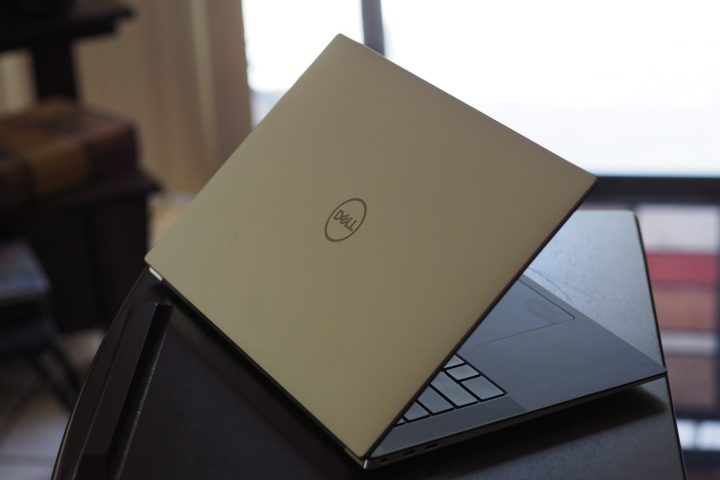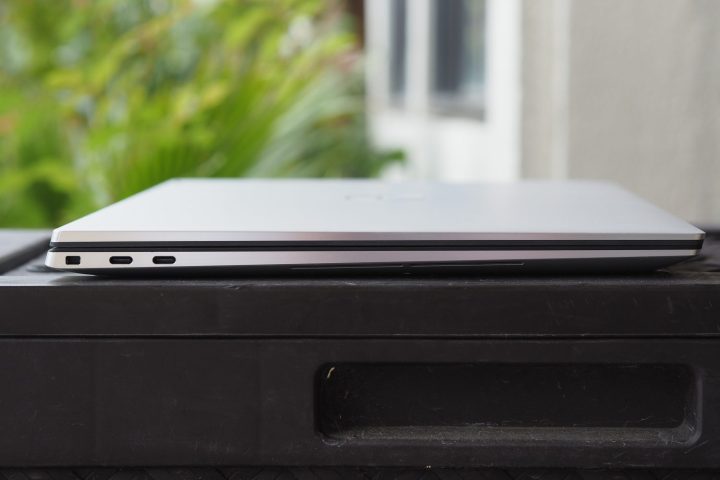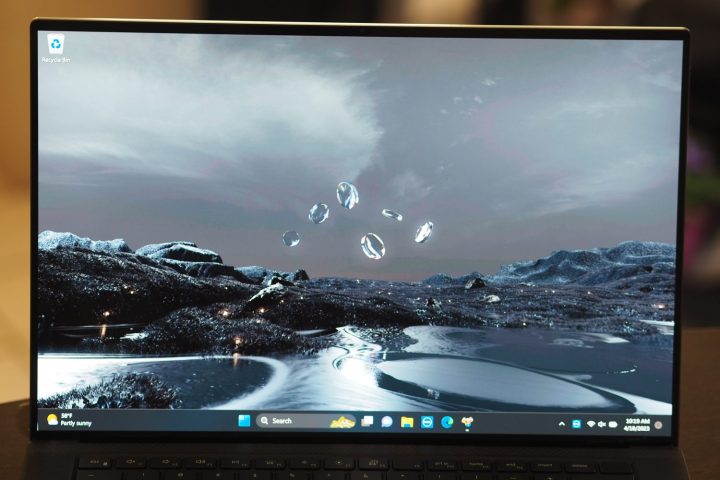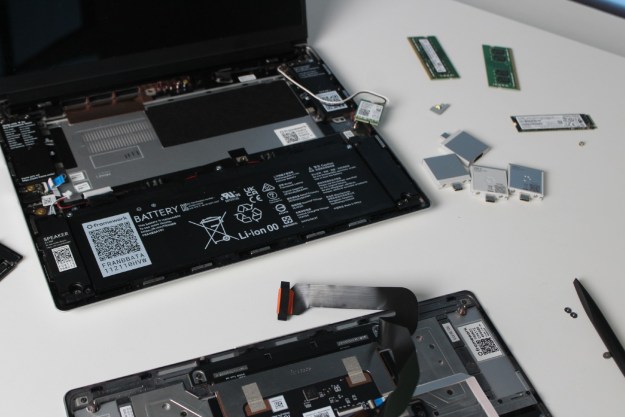You’d be forgiven for mistaking the Dell XPS 17 for only a slightly bigger XPS 15. Both have large displays packed into the smallest chassis possible, and both boast some ambitious performance claims. However, there’s more going on between the two than meets the eye.
Just how big of a difference is there between the XPS 15 9530 and the XPS 17 9730? Here’s everything you need to know about these two great laptops, and which you should buy. Note that both
Specs
| Dell XPS 15 9530 | Dell XPS 17 9730 | |
| Dimensions | 13.56 inches x 9.06 inches x 0.73 inches | 14.74 inches x 9.76 inches x 0.77 inches |
| Weight | 4.23 pounds (non-touch) 4.62 pounds (touch) |
4.87 pounds non-touch 5.37 pounds touch |
| Processor | Intel Core i5-13500H Intel Core i7-13700H Intel Core i9-13900H |
Intel Core i5-13500H Intel Core i7-13700H Intel Core i9-13900HK |
| Graphics | Intel Iris Xe Intel Arc A370M Nvidia GeForce RTX 4050 (40W) Nvidia GeForce RTX 4060 (40W) Nvidia GeForce RTX 4070 (40W) |
Intel UHD graphics Intel Iris Xe graphics Nvidia GeForce RTX 4050 (60W) Nvidia GeForce RTX 4060 (60W) Nvidia GeForce RTX 4070 (60W) Nvidia GeForce RTX 4080 (60W) |
| RAM | 8GB DDR5 16GB DDR5 32GB DDR5 64GB DDR5 |
8GB DDR5 16GB DDR5 32GB DDR5 64GB DDR5 |
| Display | 15.6-inch 16:10 Full HD+ (1920 x 1200) IPS 15.6-inch 16:10 3.5K (3456 x 2160) OLED |
17.0-inch 16:10 Full HD+ (1920 x 1200) IPS 17.0-inch 16:10 4K+ (3840 x 2400) IPS |
| Storage | 512GB PCIe SSD 1TB PCIe SSD 2TB PCIe SSD 4TB PCIe SSD 8TB PCIe SSD (2 x 4TB SSDs) |
512GB PCIe SSD 1TB PCIe SSD 2TB PCIe SSD 4TB PCIe SSD 8TB PCIe SSD (2 x 4TB SSDs) |
| Touch | Optional | Optional |
| Ports | 1 x USB-C 3.2 Gen 2 2 x USB-C with Thunderbolt 4 1 x 3.5mm audio jack Full-size SD card reader |
4 x USB-C with Thunderbolt 4 1 x 3.5mm audio jack Full-size SD card reader |
| Wireless | Wi-Fi 6E and Bluetooth 5.2 | Wi-Fi 6E and Bluetooth 5.2 |
| Webcam | 720p with Windows 11 Hello infrared camera | 720p with Windows 11 Hello infrared camera |
| Operating system | Windows 11 | Windows 11 |
| Battery | 86 watt-hours | 97 watt-hours |
| Price | $1,500 | $2,450+ |
| Rating | 3.5 out of 5 stars | 3.5 out of 5 stars |
Design

There aren’t any significant design features that distinguish the Dell XPS 17 from its smaller sibling. The XPS 15 was redesigned in 2020 and launched alongside the XPS 17, which was the first of its kind. Since then, the two
The size, though, is where these two
The XPS 15 weighs 4.62 pounds, which is about three-quarters of a pound lighter than the XPS 17. You can feel the difference when lugging it around in your backpack or even resting it on your lap. That applies to the dimensions of these devices, as well. The XPS 15 is 5% thinner at 0.73 inches thick. The XPS 17’s overall footprint is also 17% larger.
If you opt for the non-touch models, both XPS
Ports

There are two important differences between the XPS 15 and XPS 17. First, the XPS 15 offers just three USB-C ports, whereas the XPS 17 has four. More than that, all four of the XPS 17’s four USB-C ports also support Thunderbolt 4 as opposed to just two of the XPS 15’s.
Display

The display selection between the XPS 15 and XPS 17 is another point of differentiation. They both use a 16:10 aspect ratio and share one resolution option for IPS displays: Full HD+ (1920 x 1200). The XPS 17 offers a UHD+ (3840 x 2400) IPS display while the XPS 15 has a 3.5K (3456 x 2160) OLED option. The lower resolution is used in all the base models, while the higher resolution panels are options.
We tested the XPS 15 with the OLED display, and it offered extremely wide and accurate colors, decent brightness, and OLED’s typical inky-black contrast. The XPS 17’s IPS UHD+ display is also excellent, with even wider colors, significantly more brightness, and a very high contrast ratio for an IPS panel that can’t match the XPS 15’s OLED panel.
Both displays are excellent for creators who demand wide and accurate colors. The XPS 15’s OLED display offers incredibly deep blacks and better high dynamic range (HDR) support, so it’s the better all-around display.
I didn’t test the lower-resolution models, but Dell tends to use lower-quality screens on its base models.
| Dell XPS 15 9530 (OLED) |
Dell XPS 17 9730 (IPS) |
|
| Brightness (nits) |
358 | 501 |
| AdobeRGB gamut | 96% | 100% |
| sRGB gamut | 100% | 100% |
| Accuracy (DeltaE, lower is better) |
1.31 | 1.33 |
| Contrast ratio | 24,850:1 | 1,570:1 |
Performance

Ultimately, the reason for the existence of the XPS 17 is extra performance. It’s more than just a slightly bigger version of the XPS 15, largely thanks to its more powerful GPU options. You can configure the XPS 17 with up to an Nvidia GeForce RTX 4080, whereas the XPS 15 maxes out at an Nvidia GeForce RTX 4070. Both GPUs are powered down compared to gaming machines, with the XPS 15’s running at 40 watts and the XPS 17 at 60 watts.
Note that both
Both
Each laptop was equipped with the RTX 4070 GPU, although the XPS 17’s was clocked faster. Surprisingly, the XPS 15 did better in the Pugetbench benchmark, where the XPS 17 fell way behind. This speed difference has a significant impact on large video projects, and the smaller laptop surprisingly took the lead.
Both
| Dell XPS 15 9530 (Core i7-13700H) |
Dell XPS 17 9730 (Core i7-13700H) |
|
| Geekbench 5 (single/multi) |
Bal: 1,787 / 11,978 Perf: 1,830 / 11,769 |
Bal: 1,901 / 12,654 Perf: 1,928 / 12,911 |
| Handbrake (seconds) |
Bal: 79 Perf: 76 |
Bal: 79 Perf: 71 |
| Cinebench R23 (single/multi) |
Bal: 1,856 / 13,386 Perf: 1,868 / 13,386 |
Bal: 1,933 / 13,554 Perf: 1,912 / 15,462 |
| Pugetbench Premiere Pro | Bal: 866 Perf: 1,023 |
Bal: 760 Perf: 848 |
| 3DMark Time Spy | Bal: 7,077 Perf: 7,632 |
Bal: 9,639 Perf: 9,535 |
| Assassin’s Creed Valhalla (1080p Ultra) |
Bal: 65 fps Perf: 105 fps |
Bal: 88 fps Perf: 95 fps |
Battery life
The larger screen and improved performance of the XPS 17 do come with one compromise: battery life. Even though the XPS 17 has 97 watt-hours of battery capacity compared to the XPS 15’s 86 watt-hours, the smaller device saw much better battery life in our tests. Surprisingly, the XPS 15 will likely last a full day of typical productivity work on a single charge, but the XPS 17 will need its charger to make it all the way through.
This is, of course, for the high-resolution models that I tested. The Full HD+ models should last at least an extra hour or two longer, though I haven’t tested them yet to confirm those numbers. Either way, the smaller screen helps the XPS 15 get a lot more juice out of its battery.
| Dell XPS 15 9530 (Core i7-13700H) |
Dell XPS 17 9730 (Core i7-13700H) |
|
| Web browsing | 9 hours, 43 minutes | 4 hours, 46 minutes |
| Video | 11 hours, 46 minutes | 5 hours, 17 minutes |
| PCMark 10 Applications | 10 hours, 49 minutes | 5 hours, 34 minutes |
Conclusion
For most people, the XPS 15 9530 will offer more than enough performance, and for creators, it’s even faster than the XPS 17. If you aren’t gunning for the top-level XPS 17 with the Nvidia RTX 4080, it’s a better value to go with the XPS 15. Depending on the configuration, the XPS 17 sells for $300 to $400 more than the XPS 15 with comparable hardware.
The XPS 17 is suitable if you need more GPU power or a larger display. If you’re able to drop well over $3,000 on the RTX 4080-powered model, then you’ll see a substantial performance increase that makes the 17-incher ideal for professional video editing or 3D modeling. But with equal components, at least in our testing, the XPS 15 is the better value.
Editors' Recommendations
- Dell XPS vs. Dell Latitude: here’s how to decide
- Dell XPS 14 or XPS 16? Here’s how to know which to buy
- Best laptop deals: Save on the Dell XPS 14, MacBook Pro 16 and more
- The 5 best laptops for photo editing and photographers
- Dell just hit reset on the XPS


